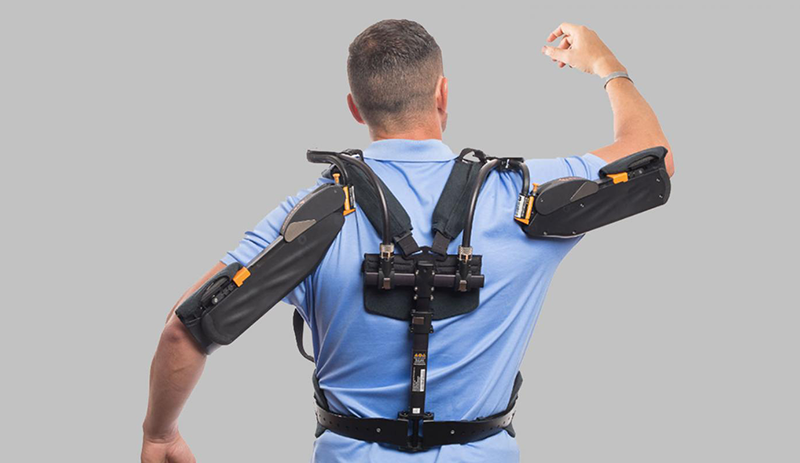Work-related musculoskeletal disorders (WMSD) are a big problem for many businesses. WMSDs are a group of painful disorders of muscles, tendons, and nerves. Carpal tunnel syndrome, tendonitis, thoracic outlet syndrome, and tension neck syndrome are examples. Each year, more than 650,000 reported cases of WMSD represent 33% of every dollar spent on workers compensation. That results in around $50 billion in lost productivity annually in the U.S., and nearly 70 million physician office visits each year, according to the Centers for Disease Control and Prevention. As a result, more businesses are employing ergonomics researchers to closely examine personal lift assist devices.
Related Ford Unveils Exoskeleton Vests Worldwide to Help Lessen Worker Fatigue and Injury
One such device is the Airframe™, an exoskeleton made by San Diego-based Levitate Technologies. This fire-resistant upper body robotic exoskeleton is capable of lowering exertion levels by up to 80% when you carry out physically taxing work.
Designed like a backpack, The Airframe can be adjusted to almost any body size with an adjustable frame and straps. It supports the upper extremities of professionals and skilled trade workers who are exposed to repetitive arm motions and/or stationary arm elevation.
“The benefits of this device have been incredible,” said Terry Butler, former director of environmental health & safety at the Vermeer Corporation, a manufacturer of industrial and agricultural equipment in Iowa. “The team members that have used this tool are more than happy to use it and have seen more prolonged work activities without feeling fatigued by the end of their shift.”
The exoskeleton has a rigid aluminum frame, springs, pulleys, and cables, which kick into action when the wearer raises their arms, and deactivate when the arms are lowered again.
The technology is entirely mechanical, and needs no batteries or tethering. It was originally developed for surgeons for use in the operating room.
“When we were designing the exoskeleton, we thought it would work for photographers, and in the general consumer market,” said Joseph Zawaideh, the vice president of marketing and business development for Levitate. “But we weren’t sure. We thought surgeons would be a good starting point.”
Related Hyundai Motor Deploys Industrial Exoskeletons in its North American Plants
The clever use of plastic components in the design of the Airframe makes it very lightweight. Many engineers and designers are also seeking ways to use plastics in their projects, primarily to reduce weight and improve durability.
“There are a lot of exoskeletons on the market,” Zawaideh said. “This is the lightest one out there. It’s light enough that workers can wear it all day.”













